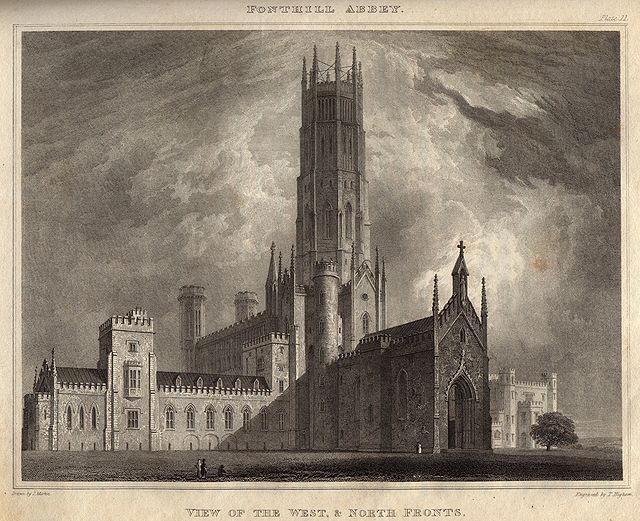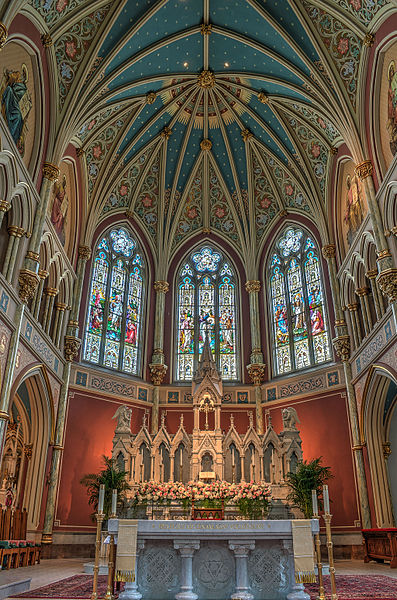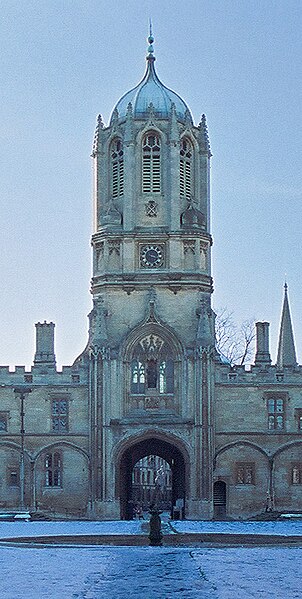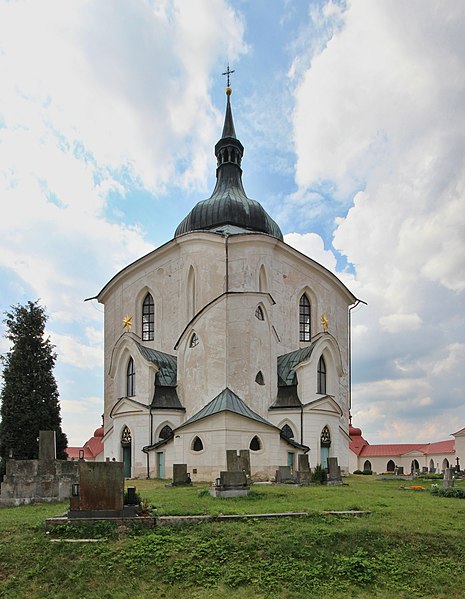Fonthill Abbey—also known as Beckford's Folly—was a large Gothic Revival country house built between 1796 and 1813 at Fonthill Gifford in Wiltshire, England, at the direction of William Thomas Beckford and architect James Wyatt. It was built near the site of the Palladian house, later known as Fonthill Splendens, which had been constructed by 1770 by his father William Beckford. This, in turn, had replaced the Elizabethan house that Beckford the Elder had purchased in 1744 and which had been destroyed by fire in 1755. The abbey's main tower collapsed several times, lastly in 1825 damaging the western wing. The abbey was later almost completely demolished.
View of the west and north fronts from John Rutter's Delineations of Fonthill (1823)
Cross section of the Abbey (Rutter, 1823)
The Abbey's entrance hall (Rutter, 1823)
A plan of the main floor (Rutter, 1823)
Gothic Revival architecture
Gothic Revival is an architectural movement that after a gradual build-up beginning in the second half of the 17th century became a widespread movement in the first half of the 19th century, mostly in England. Increasingly serious and learned admirers sought to revive medieval Gothic architecture, intending to complement or even supersede the neoclassical styles prevalent at the time. Gothic Revival draws upon features of medieval examples, including decorative patterns, finials, lancet windows, and hood moulds. By the middle of the 19th century, Gothic Revival had become the pre-eminent architectural style in the Western world, only to begin to fall out of fashion in the 1880s and early 1890s.
Sint-Petrus-en-Pauluskerk in Ostend (Belgium), built between 1899 and 1908
The Cathedral of St. John the Baptist, Savannah (Georgia, United States)
Tom Tower, Oxford, by Sir Christopher Wren 1681–1682, to match the Tudor surroundings
Pilgrimage Church of Saint John of Nepomuk by Jan Santini Aichel (around 1720), Czech Republic, historic Moravia








